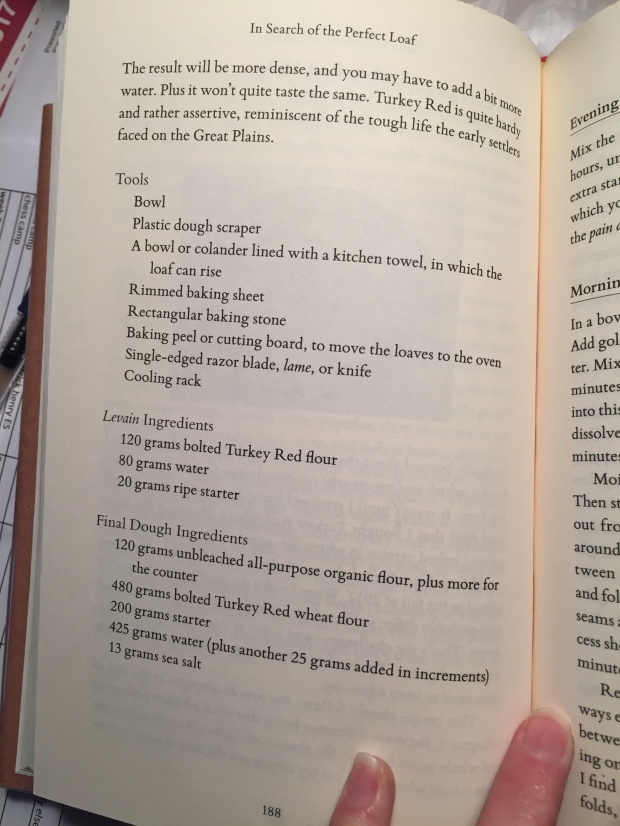
As my book reviews have gone on, I haven’t been able to find the time to make more than one or two recipes from each book. Sometimes I skip the general recipes or the sourdough recipes; I know what my sourdough tastes like. I may make the baguette recipe in Sam Fromartz’s book In Search of the Perfect Loaf, but mostly it was the Turkey Red Miche recipe that intrigued me:
I still have some whole wheat berries left over that I bought in Texas a long time ago, so I decided to try making them into flour. 
This was easier said than done. 
Here was my set-up with the spice grinder, sifter, and bowl to collect the flour. It took a long time and only resulted in barely the amount (120 grams) I needed for the leaven.


Here is the leaven. I let it sit overnight. It really sucked up the water and made a very stiff leaven.

On the second day, you grind up another 480g of flour for the final dough. I ran out of wheat berries (and patience!) so I mixed it with whole ground bulgur, store-bought whole wheat flour, and flaxseed meal.


The one thing that was interesting about the recipe is making a little indentation in the dough with flour and measure the salt and add 25 g of warm water to dissolve the salt. Then mix the salt water into the rest of the dough.
I was doing two doughs at once, so to keep my photos from getting confused I labeled them with post-its. Every 30 minutes for four hours, do one stretch and fold to the dough. I was actually surprised by how cohesive the dough felt, with only a minimum of AP flour (20% of the total flour by weight) to provide a gluten boost. The other thing I was surprised about was how much stronger the dough smelled. Fromartz talks about freshly-milled flour as more assertive than store-bought grain and it was true in this case, even with wheat berries that were nearly 10 years old.
I added a bit more water because the dough was just so stiff.
After a few hours of periodic stretching and folding, I flattened out the dough on a floured counter. I divided it in two pieces. Then I folded the edges together to make a seam.

I placed the dough in a floured banetton (you could also use a bowl with a floured towel inside). I preheated the oven to 500 degrees F with a pizza stone inside for an hour.
At this point, I was a little confused. I mean, I always thought a miche was an enormous, pounds-heavy loaf. After some research, I found I wasn’t wrong – a miche is typically a large round loaf. But it can also be defined as “a round loaf made from a natural leavening that also has a high percentage of whole wheat flour in it.” This definitely fits the bill in that sense.
Overall, I was pleased with the rise and oven spring of the loaves.

You can even see the gluten formation in the bottom loaf in this picture:
When I couldn’t take it anymore and cut into the loaf, I was pleased to discover a nicely textured crumb that wasn’t dense at all. The flavor was spectacular- very hearty but not bitter at all. The bread had no sweetener added but had just a touch of sweetness from the wheat itself.
Unfortunately this dough used up the last of my wheat berries and I’m not sure where I can get more, but once I do track some down (hopefully milled this time!) I would be interested in making this bread again.
